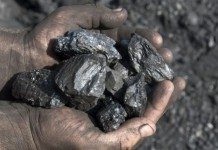
[miningmx.com] — THE Richards Bay Coal Terminal (RBCT) pulled a little extra out of the hat in December when it exported 6.1 million tonnes (mt), bringing total exports for 2010 to 63.4mt.
That’s the best performance in three years. However, it only matches the volume of exports the terminal shifted in 1999, even though it now has the installed capacity to handle 91mt/year.
Exports through the terminal hit 10-year lows in 2009 – when the RBCT exported 61.1mt – and 2008, when it exported 61.7mt.
The terminal had budgeted to do at least 65mt this year, based on guarantees from Transnet Freight Rail (TFR) that it would deliver that volume of coal.
Transnet acting CEO Chris Wells made that commitment, based on the sustainable turnaround in operating efficiencies at TFR he said were finally achieved last year. However, TFR’s rail volumes were badly hit by the three-week strike in May.
RBCT CEO Raymond Chirwa said he was concerned that railings, on average, continued to remain well below the planned level of 65mt for 2010. He said the railed tonnage received in 2010 was 62.9mt, compared with 61mt in 2009.
He said: “The derailments, which occurred towards the end of last year, resulted in ships waiting for cargo as at December 31.
“This situation has also depleted our stocks to end at 1.7mt in 2010. This will have a definite impact on the first-quarter exports. We hope 2011 will be a continued better year for exports as dependent on the efficiency and improvements of railings.’
According to Chirwa, the RBCT exported 59% of its coal to Asian markets and 25% to European markets. A further breakdown shows that India imported 32% of the 63.4mt the RBCT exported, while China imported 11%.
The numbers underscore the growing importance of the Asian markets to the SA coal companies, whose traditional markets until now have been in Europe.
South Africa has an advantage in Europe over its major coal export competitor Australia because of lower freight costs while the Australians have a freight cost advantage into Asia, particularly China.
Chirwa pointed out that Europe took 46% of the RBCT’s exports in 2009 and 63% of exports in 2008.
He said: “The significant changing factor is the major economic development happening in China and India, requiring more electrical power and coal inputs into their major factories.’
What the RBCT does this year and for the foreseeable future is totally dependent on TFR meeting its railage forecasts, and also keeping to its planned capital expenditure programme to boost its capacity on the Witbank to Richards Bay line.
Wells was adamant in October that the productivity improvements on the line were sustainable, with TFR able to rail at a rate of 1.4mt/week “week in and week out’.
He estimated TFR’s current capacity on the line at about 71mt/year. He predicted TFR would rail 65mt to Richards Bay during its financial year to end-March and that “the final figure could be one or two million tonnes above that’.
He also said TFR had committed to spending R15.4bn to expand coal export capacity on the line to 81mt annually by 2014. Independent consultants Oliver Wyman were carrying out a study on likely demand for capacity on the line above 81mt to determine the timing of further expansion.
But Wells has now resigned as acting CEO and will leave Transnet at end-March, after a handing-over period to new chairperson Mafika Mkwanazi who is going to stand in as CEO until a new full-time appointment is made.
Transnet also has a new board of directors reporting to a new Minister for Public Enterprises – Malusi Gigaba – who replaced Barbara Hogan in the last cabinet reshuffle.
The mining industry must be hoping the new Transnet hierarchy is going to sustain the level of commitment to growing its major bulk commodity businesses – coal and iron ore.











